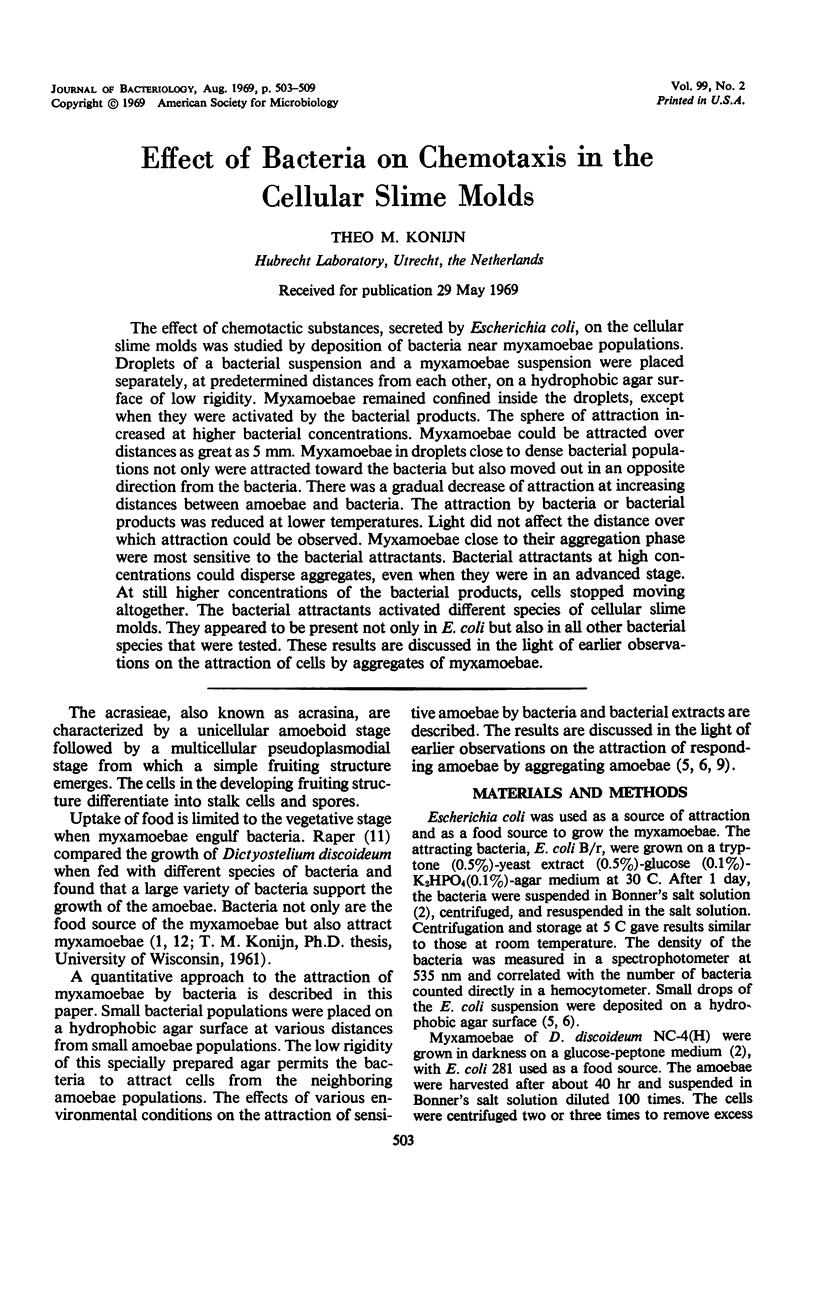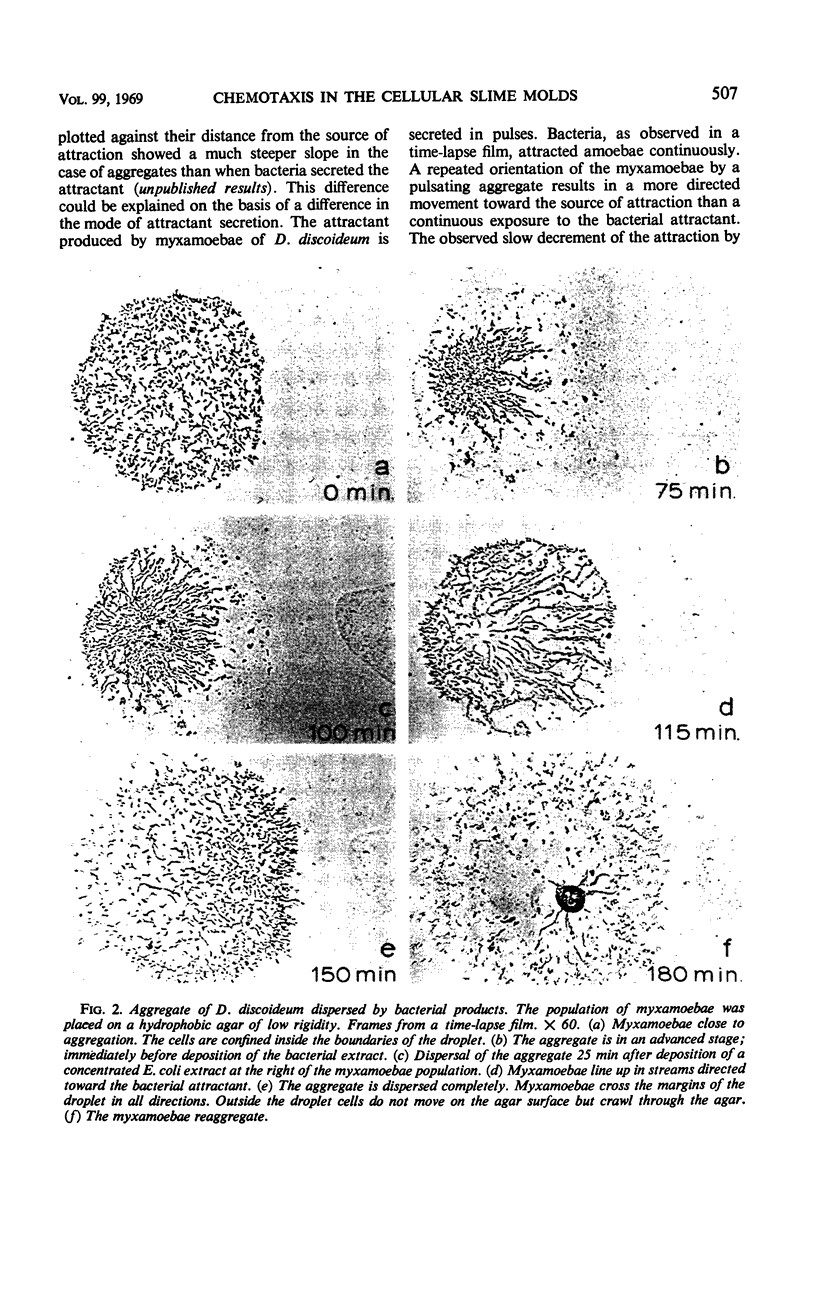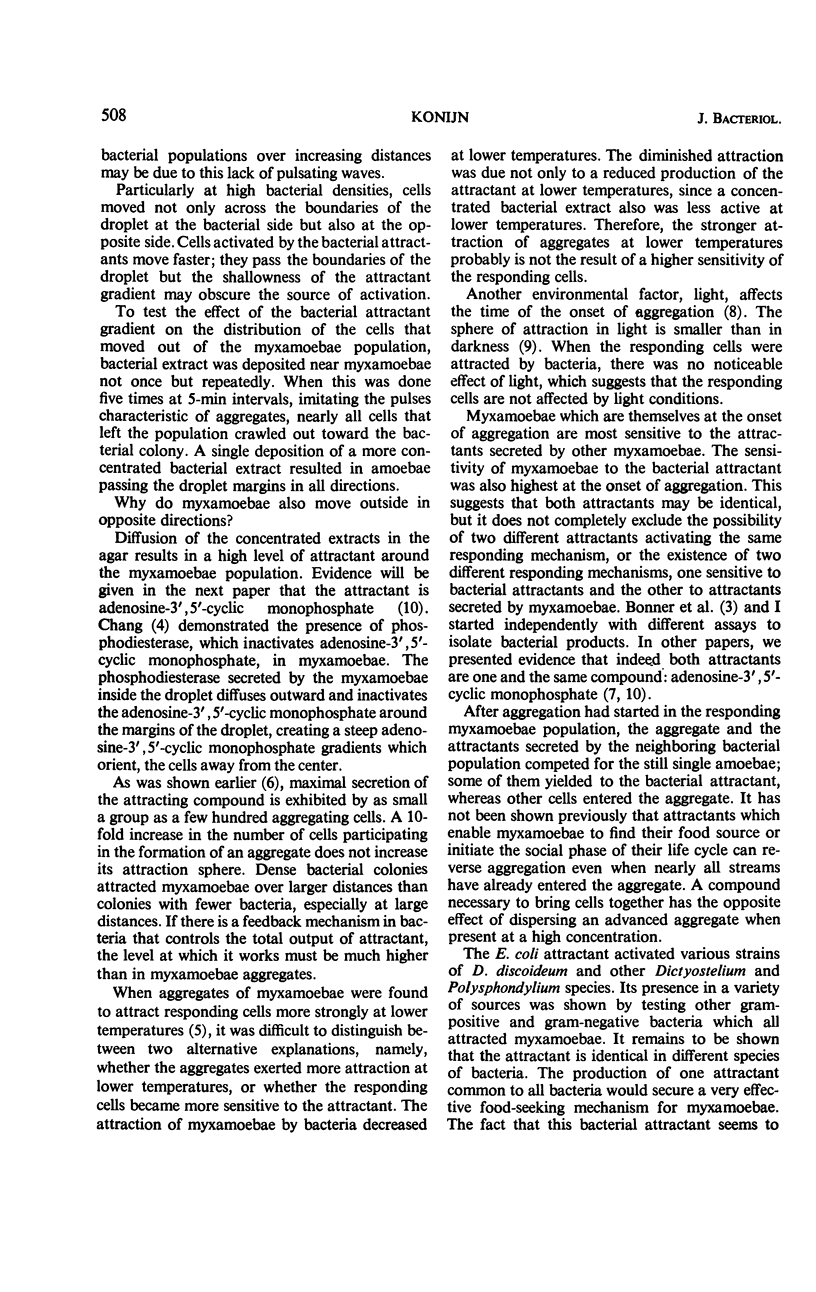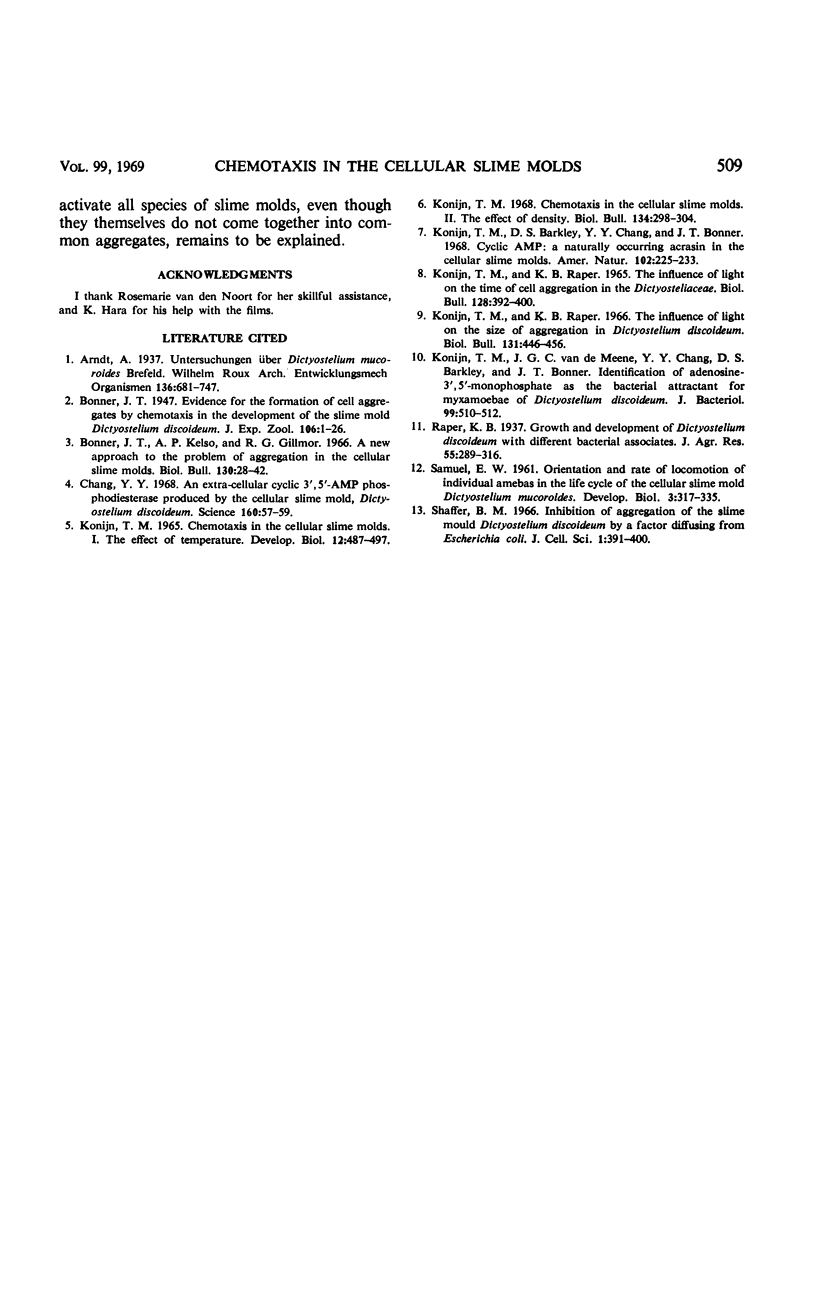Abstract
The effect of chemotactic substances, secreted by Escherichia coli, on the cellular slime molds was studied by deposition of bacteria near myxamoebae populations. Droplets of a bacterial suspension and a myxamoebae suspension were placed separately, at predetermined distances from each other, on a hydrophobic agar surface of low rigidity. Myxamoebae remained confined inside the droplets, except when they were activated by the bacterial products. The sphere of attraction increased at higher bacterial concentrations. Myxamoebae could be attracted over distances as great as 5 mm. Myxamoebae in droplets close to dense bacterial populations not only were attracted toward the bacteria but also moved out in an opposite direction from the bacteria. There was a gradual decrease of attraction at increasing distances between amoebae and bacteria. The attraction by bacteria or bacterial products was reduced at lower temperatures. Light did not affect the distance over which attraction could be observed. Myxamoebae close to their aggregation phase were most sensitive to the bacterial attractants. Bacterial attractants at high concentrations could disperse aggregates, even when they were in an advanced stage. At still higher concentrations of the bacterial products, cells stopped moving altogether. The bacterial attractants activated different species of cellular slime molds. They appeared to be present not only in E. coli but also in all other bacterial species that were tested. These results are discussed in the light of earlier observations on the attraction of cells by aggregates of myxamoebae.
Full text
PDF






Images in this article
Selected References
These references are in PubMed. This may not be the complete list of references from this article.
- Bonner J. T., Kelso A. P., Gillmor R. G. A new approach to the problem of aggregation in the cellular slime molds. Biol Bull. 1966 Feb;130(1):28–42. doi: 10.2307/1539950. [DOI] [PubMed] [Google Scholar]
- Chang Y. Y. Cyclic 3',5'-adenosine monophosphate phosphodiesterase produced by the slime mold Dictyostelium discoideum. Science. 1968 Jul 5;161(3836):57–59. doi: 10.1126/science.161.3836.57. [DOI] [PubMed] [Google Scholar]
- Konijn T. M. Chemotaxis in the cellular slime molds. I. The effect of temperature. Dev Biol. 1965 Dec;12(3):487–497. doi: 10.1016/0012-1606(65)90011-4. [DOI] [PubMed] [Google Scholar]
- Konijn T. M. Chemotaxis in the cellular slime molds. II. The effect of cell density. Biol Bull. 1968 Apr;134(2):298–304. doi: 10.2307/1539605. [DOI] [PubMed] [Google Scholar]
- SAMUEL E. W. Orientation and rate of locomotion of individual amebas in the life cycle of the cellular slime mold Dictyostelium mucoroides. Dev Biol. 1961 Jun;3:317–335. doi: 10.1016/0012-1606(61)90050-1. [DOI] [PubMed] [Google Scholar]
- Shaffer B. M. Inhibition of aggregation of the slime mould Dictyostelium discoideum by a factor diffusing from Escherichia coli. J Cell Sci. 1966 Dec;1(4):391–400. doi: 10.1242/jcs.1.4.391. [DOI] [PubMed] [Google Scholar]



